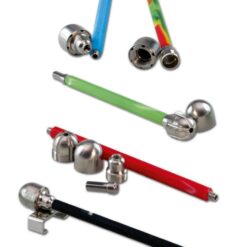In recent years, cannabis has undergone a major transformation – from a stigmatised substance to a topic of serious scientific and cultural interest. One of the more surprising developments in this shift is the growing conversation around cannabis and its role in promoting physical activity. Long gone are the days when cannabis was exclusively associated with couch-lock and junk food cravings. Today, more people are using it before workouts, hikes, yoga sessions, and even endurance sports. But does cannabis really promote physical activity, or is this just another trend lacking scientific backing?
In this article, we explore the evolving relationship between cannabis and exercise, reviewing the available evidence, potential mechanisms, user reports, and important considerations for those interested in combining the two.
Cannabis And The Endocannabinoid System
To understand how cannabis might influence physical activity, it is helpful to consider the body’s endocannabinoid system (ECS) – a complex network of receptors, enzymes, and endogenous cannabinoids (like anandamide) that help regulate functions such as mood, pain, appetite, and energy balance.
When you consume cannabis, cannabinoids like THC (tetrahydrocannabinol) and CBD (cannabidiol) interact with the ECS. THC binds to CB1 receptors in the brain and central nervous system, often producing euphoria, relaxation, or altered perception. CBD, on the other hand, influences the ECS in more indirect ways and is known for its anti-inflammatory and calming properties.
Given the ECS’s role in mood regulation, pain perception, and motivation, it is plausible that cannabis could affect exercise habits – both positively and negatively.
What The Research Says
While there is still limited large-scale research on cannabis and exercise due to historical restrictions, a few studies and surveys offer compelling insights.
Increased Motivation And Enjoyment
A 2019 study published in Frontiers in Public Health surveyed over 600 cannabis users in U.S. states where the substance is legal. Over 80% of participants reported using cannabis either before or after exercise, and among those, most said it increased enjoyment and helped with recovery. A majority also believed it motivated them to be more active.
The researchers concluded that “co-use of cannabis and exercise is relatively common and is associated with greater levels of physical activity.”
Pain Reduction And Recovery
Cannabis is widely known for its analgesic and anti-inflammatory properties. This has led many athletes to incorporate it into their recovery routines. By reducing muscle soreness, joint pain, and inflammation, cannabis may help people engage in physical activity more consistently and with less discomfort – especially for those with chronic pain or injuries.
Anxiety And Performance
Some users report that low to moderate doses of cannabis, particularly CBD-rich strains, help reduce performance anxiety and improve focus during activities like yoga, climbing, or even running. Cannabis may promote a meditative state or “flow,” which can be beneficial for certain types of exercise.
Recommended products
-
Brutal CBD – Berry Apple Juice
R195.00 – R380.00Price range: R195.00 through R380.00 -
Grenco Science – G Pen Connect Vaporizer Cookies (Blue)
R3,000.00 -
Black Leaf – “Wand Vape” Steel Hand Vaporizer
R375.00 -
Zootly CBD Bon Bons (50mg)
R70.00
How Cannabis Might Enhance Exercise
While more research is needed to fully understand the interaction between cannabis and physical performance, several mechanisms might explain the reported benefits.
Euphoria And Mood Boosting
THC stimulates dopamine release and produces feelings of euphoria. This can make workouts feel more enjoyable and motivate people to engage in exercise more frequently. In fact, some studies suggest that the “runner’s high” people feel after cardio is partly due to increased endocannabinoid activity – so it makes sense that cannabis might mimic or enhance this feeling.
Altered Pain Perception
THC has been shown to reduce the perception of pain. For people who struggle with chronic pain, muscle soreness, or arthritis, cannabis may make it easier to participate in physical activities that would otherwise be too uncomfortable.
Increased Mind-Body Awareness
Especially in mind-body disciplines like yoga or tai chi, cannabis may heighten sensory perception and body awareness. Some users report feeling more attuned to their breath, posture, and movement, which can enhance the quality of their practice.
Enhanced Focus (In Some Cases)
Certain strains – especially sativa-dominant or balanced hybrids – can improve mental clarity and focus, making it easier to stick with longer or more complex workouts.
Potential Downsides And Considerations
Despite these reported benefits, cannabis is not a one-size-fits-all solution. There are several caveats to keep in mind, especially for beginners or those unfamiliar with how cannabis affects them.
Impairment
THC can impair coordination, reaction time, and judgment. For high-intensity or technically demanding sports (e.g., weightlifting, mountain biking, or gymnastics), this could increase the risk of injury. Beginners should use extreme caution and start with low doses when experimenting with cannabis before physical activity.
Cardiovascular Effects
Cannabis increases heart rate and may temporarily raise blood pressure, which could be problematic for individuals with heart conditions or those engaging in strenuous cardiovascular activities.
Dehydration And Temperature Regulation
Cannabis can cause dry mouth and may interfere with the body’s ability to regulate temperature. This could lead to faster dehydration during exercise, especially in hot environments.
Varied Individual Responses
Everyone reacts differently to cannabis. While some users feel energised and focused, others may feel lethargic or anxious. The strain, dosage, and method of consumption all play a role in determining how cannabis affects physical performance.
Best Practices For Combining Cannabis And Exercise
If you are curious about integrating cannabis into your workout routine, here are a few tips to keep your experience safe and effective:
- Start low, go slow: Especially if you are new to cannabis or using it with physical activity for the first time. Opt for low THC content or a balanced THC/CBD strain.
- Choose the right strain: Sativa-dominant strains are often preferred for energising effects, while indicas are better suited for post-workout recovery.
- Mind the method of consumption: Inhaled methods (vaping or smoking) offer faster onset, but effects can be stronger. Edibles have a delayed onset and longer duration, which may not be ideal for all types of exercise.
- Stay hydrated: Always drink water before, during, and after your workout to prevent dehydration.
- Listen to your body: Pay attention to how cannabis affects your coordination, energy, and motivation. Stop if you feel uncomfortable or impaired.
- Avoid risky activities: Do not use cannabis before exercises that require precision, quick reaction times, or carry a high risk of injury.
Cannabis might not turn you into an Olympic athlete – but for some people, it can be a helpful tool for making physical activity more enjoyable, manageable, or consistent. Whether it is reducing pain, improving recovery, or simply making a workout feel more fun, cannabis may have a place in a balanced fitness lifestyle.
Ultimately, cannabis is not a performance enhancer in the traditional sense, but for the right individual, it might just be the motivational nudge or recovery aid that keeps them moving.










